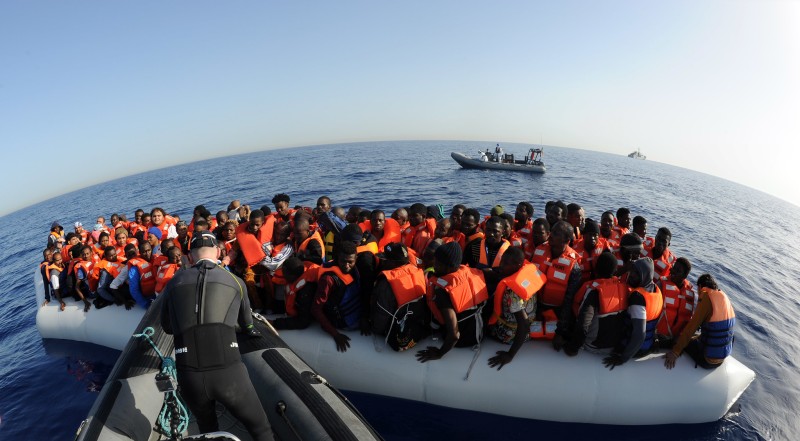Reported by
Despite the many threats and challenges - including blackmail, torture, rape, enslavement, and even death - the migrant population in Libya continues to grow as more people arrive at the transit hub seeking better opportunities in Europe, pursuing work opportunities, or fleeing conflict.
As of February, the number of migrants in Libya reached 858,604, representing a 19 percent increase compared to the same period last year, according to the latest report from the International Organization for Migration’s (IOM) Displacement Tracking Matrix (DTM).
This upward trend in migration through the transit hub has been increasing since the end of 2024, reaching 824,131 in December. The current migrant population in Libya is highly concentrated, with 83 percent coming from just four countries: Sudan, Niger, Egypt, and Chad.
Geopolitical instability is one of the two primary reasons for people to decide to migrate. Some 20 percent named conflict as their main motive to leave home. For example, the ongoing civil war in Sudan has significantly contributed to the increase in Sudanese migrants between 2024 and 2025 to 262,036. Accounting for 31 percent of the total migrant population, Sudanese migrants make up the largest migrant group in Libya.
The other reason is economy. According to the IOM’s survey, 74 percent of the migrants cited lack of financial opportunities as their reason for traveling to Libya.
“The primary drivers of migration from North Africa to Libya, according to DTM data, were war and conflict, which account for 43 per cent, and economic hardship, with 37 percent citing insufficient income in the country of origin,” according to the IOM.
While Libya serves as a key transit country for those heading to Europe, only one-third of surveyed migrants arrived in Libya with the intention to settle there. About 42 percent reported having no definite plans, 11 percent plan to move to another country, and 16 percent stated that they plan to return to their country of origin.
Between January and February 2025, a total of 6,835 migrants crossed from Libya to Europe via the Central Mediterranean route, arriving in Italy and Malta. This figure represents a 32 percent increase compared to the 4,626 migrants who made the same journey during the same period in 2024.
However, not everyone survived the perilous journey to Europe. The IOM reported that 104 migrants died while en route from Libya to Italy and Malta through the Mediterranean. During the two-month period, 260 migrants were reported dead or missing in the sea.
In addition to the already perilous journey itself, migrants in Libya face a myriad of threats. In recent months, Libya has seen a series of mass grave discoveries, prompting a nationwide crackdown on migrant smuggling. The arrests of traffickers and the dismantling of their networks have revealed the horrific conditions migrants endure at the hands of traffickers.
Earlier this year, a report accused Libyan state and non-state actors of capturing migrants in Tunisia and later demanding ransoms for their release. The report detailed the systematic abuses that migrants suffered throughout the process, from their arbitrary capture in Tunisia to their detention in Libyan prisons.
The compounding problems that migrants face in Libya are exacerbated by the country's persistent instability. Many of these migrants are fleeing their home countries in search of safety, but finding it in Libya is far from guaranteed.
The already dire political situation in Libya has worsened amid escalating violence in the capital city of Tripoli following the killing of the leader of the Support Force Apparatus (SSA). The recent violent clashes and attacks on civilian areas have added to the threats faced by Libya's population, with vulnerable groups such as migrants often being among the first victims to get caught in the militia crossfire.
Migrants, refugees, and asylum seekers held in detention centers have reported facing “torture, rape and sexual violence, extortion, and forced labor at the hands of SSA forces,” according to The Global Centre for the Responsibility to Protect’s latest Atrocity Alert.





